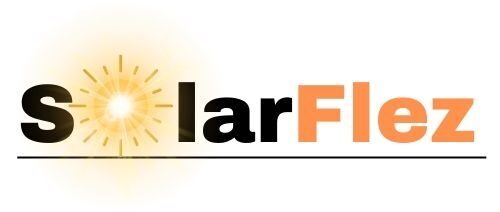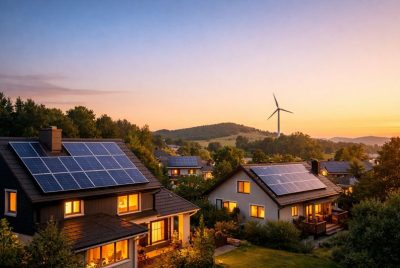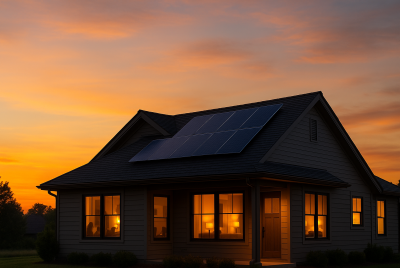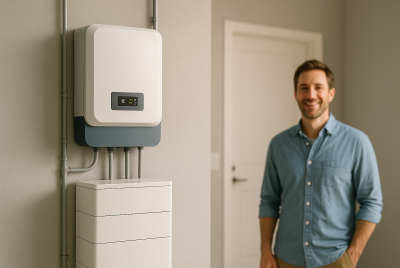Solar Power for a Shed: A Game-Changer for Your Backyard Setup
To be honest, there’s a certain something mystical about using the sun’s power. Sunlight works hard for you without any wires or expensive energy bills. Have you ever wondered, “Won’t it be great if I could use the electricity from the house to run my shed? “Solar energy is the solution, therefore. It just makes sense to convert to solar power for your shed, whether it serves as your weekend workshop or just a place to store stuff. Compared to pulling out extension cords, this is much more stylish, economical, and environmentally beneficial. Let’s examine why using solar power for sheds is such a wise decision.
What is Solar Power for a Shed?
Imagine not needing to run long lines or plug in from your house to power your shed—just a personal power source all its own. That’s precisely what solar energy provides. Installing solar panels to produce electricity, storing it in batteries, and using it to power lights, tools, and possibly even a fan for those hot summer days are all part of the process. It’s like adding a little electrical freedom to your shed—off the grid and proud.
Why Use Solar Power for a Shed?
When hauling tools out of your shed, have you ever stumbled over a power cord? Yes, exactly the same here. Your shed becomes wire-free thanks to solar electricity, which eliminates this headache. However, it goes beyond convenience. Additionally, solar energy benefits the environment. You may save your energy costs and carbon footprint by using sunshine to power your shed. Yes, it’s a little adjustment, but over time, it adds up, and it feels good to know you’re contributing to the betterment of the environment.
Is Solar Power Worth It for Sheds?
In a word: absolutely! Think about it—if your shed is far from the nearest power outlet, solar panels eliminate the need to extend your home’s wiring. Even if it’s just for a couple of lightbulbs or charging a tool, solar saves you time and effort. And for those of us who love a good DIY project, there’s something really satisfying about building a little solar system that works.
How Much Power Does a Shed Need?
This one depends on what you’re planning to do with your shed. Using it for storage? You might only need a 100W panel to power a light or two. If you’ve got bigger plans, like turning it into a workshop or an outdoor escape with a mini-fridge (don’t we all dream of that?), you’ll need a bit more. A 200W system or higher will handle power tools and small appliances. The key is knowing what you want—are you after cozy lighting, or do you need serious juice to run equipment?
Choosing the Right Solar Panel for Your Shed
Here’s where things get a little technical, but don’t worry—it’s nothing you can’t handle. Monocrystalline panels are the rockstars of efficiency, giving you more power even when the sun isn’t at its brightest. But they come with a higher price tag. Polycrystalline panels, on the other hand, are a bit more affordable, though slightly less efficient. Think of it like choosing between a fancy sports car and a solid sedan—they’ll both get you where you need to go, just at different speeds.
Should You Use Solar Batteries?
Yes, yes, yes! (Seriously, don’t skip this part.) Batteries store the energy your solar panels collect, which means you can use your shed’s power even after the sun goes down. Without batteries, it’s like having a flashlight with no working batteries—you’ll only have light when the sun’s out. Lead-acid batteries are cheaper and reliable but need a bit more maintenance. Lithium-ion batteries are more expensive but last longer and require less fuss. If you’re like me and prefer “set it and forget it” solutions, lithium is the way to go.
How to Install Solar Panels on Your Shed
Now, this is where it gets fun (or a little frustrating, depending on how handy you are). Installing solar panels is easier than you might think. Here’s what you’ll need:
- Solar panels
- A charge controller
- Batteries
- An inverter (to convert DC power to AC)
- Some wiring (don’t worry, it’s not as scary as it sounds)
The trick is to mount the panels at an angle where they’ll get the most sunlight (your shed roof is the perfect spot). After that, attach the panels to the charge controller, the controller to the batteries, and the inverter to your devices’ power source. It sounds like a lot, but once you see it come together, it’s totally worth it.
How Much Does It Cost to Solar Power a Shed?
This depends on how ambitious you get. A basic system with a small panel and battery might set you back around $300. If you’re dreaming big and want to power tools, fans, and lights, expect to spend closer to $1,000. It’s an investment, sure, but think of all the times you’ll avoid paying for electricians or running up your energy bills. (And let’s be honest, the bragging rights alone are worth something.)
Maintenance of Solar Panels for Sheds
Good news—solar panels are low maintenance. Just make sure they stay clean. Dust, leaves, or bird droppings (yeah, it happens) can block sunlight and reduce efficiency. A quick rinse with water every now and then should do the trick. As for the batteries, give them a check-up every so often, especially if you’re using lead-acid ones.
Can Solar Power Run Power Tools?
Yes, but you’ll need a beefy system for it. Running a drill or saw is going to demand more energy than a couple of LED lights. If your shed doubles as a workshop, consider adding extra panels and batteries to handle the load. That way, you won’t have to stop halfway through a project because the power ran out (we’ve all been there).
Do Solar Panels Work in Winter?
Surprisingly, yes! Even on cloudy days, solar panels still generate energy, just not as much. Winter days are shorter, so you’ll want to have good battery storage to keep things running. But trust me, there’s something pretty satisfying about using solar power in the middle of winter. It feels like you’re pulling off a small victory against the season.
Going Off-Grid with Your Solar-Powered Shed
Ever fantasize about going off-grid, even if it’s just for a while? (Same.) A solar-powered shed is a small step in that direction. It won’t power your entire home, but it gives you the freedom to use your shed without relying on the grid. Whether you’re charging tools or setting up a little escape with a radio and a coffee maker, it’s nice knowing you’re not tied to anyone else’s power.
Environmental Benefits of Solar Power for Sheds
Here’s the thing—every little bit helps. By using solar power for your shed, you’re cutting down on emissions and reducing your reliance on fossil fuels. It’s a small step, sure, but small steps add up. (It’s kind of like recycling: one soda can might not make a difference, but millions of cans do.) Plus, it’s cool to tell your neighbors that your shed runs on sunshine.
Related Products for a Solar-Powered Shed
Let’s talk about a few things that’ll make your solar-powered shed even better:
- Solar Shed Lights: Easy to install with built-in panels and batteries. Some even have motion sensors—pretty handy, right?
- Solar-Powered Fans: Perfect for keeping the shed cool in summer.
- Battery Chargers and Maintainers: Keep your batteries in top shape.
- Solar Security Cameras: For peace of mind, with motion detection and night vision.
- Portable Solar Power Banks: Great for charging devices on the go.
- Inverters: Convert DC power to AC, so you can plug in everyday appliances.
- Smart Charge Controllers: Prevent overcharging and offer real-time energy tracking.
These extras turn a basic solar setup into a powerhouse (pun intended).
Key Research Findings on Solar Power Integration
If you’re the kind of person who likes to know the facts before diving in, here are a couple of studies worth noting:
- Cost-Benefit Analysis of Solar Energy in Buildings:
A study in Brazil found that photovoltaic (PV) systems generate more energy and cut CO2 emissions better than solar heating systems. This shows that PV panels are a smart investment for smaller setups like sheds—not just environmentally but financially, too. - Integration of Solar PV Roofs for Energy Efficiency:
This research highlights the benefits of combining PV panels with other roof designs, like green roofs, to improve energy efficiency and insulation. For shed owners, it’s a reminder to use rooftop space wisely and maximize both power and comfort.
Summary
Solar power for a shed is the ultimate win-win: you get a functional, eco-friendly space, and you avoid the hassle of wiring from the house. Whether you need basic lighting or you’re running power tools, solar panels offer flexibility and freedom. With proper planning, your shed can be a little oasis of independence—powered entirely by the sun.
FAQs
1. Can I run a heater in my shed with solar power?
Yes, but you’ll need a high-capacity system and solid battery storage. Heaters are energy hogs.
2. How long do solar panels last?
Solar panels can last 25-to 30 years, which means you’ll get decades of use. Just make sure to maintain your batteries—those will likely need replacing every 5 to 10 years, depending on the type you use.
3. What happens if it’s cloudy for days?
Solar panels still generate some energy on cloudy days, but at a reduced rate. The key is having good battery storage so you can tap into the energy you’ve saved up during sunnier times. It’s kind of like having a rainy day fund—literally.
4. Is it possible to link my solar shed system to the grid?
Absolutely! A grid-tied system allows you to pull energy from the grid when needed and even sell excess energy back to the utility company. It’s a neat way to stay flexible while still enjoying the benefits of solar.
5. Is solar power for a shed worth the investment?
Totally. Solar power might seem like a big upfront investment, but it pays off over time through savings on energy bills. Plus, you get the added convenience of powering your shed without relying on the house. And let’s face it—there’s something pretty cool about having a shed that runs on sunshine.
And there you have it! With the right solar setup, your shed becomes more than just a place to store tools—it becomes a self-sufficient space that’s ready to power your projects, hobbies, and everything in between. Ready to give up using extension cables and let the sun handle the heavy lifting now? Trust me, once you go solar, you’ll wonder how you ever lived without it. Now’s the perfect time to jump in—your shed (and your future self) will thank you!




